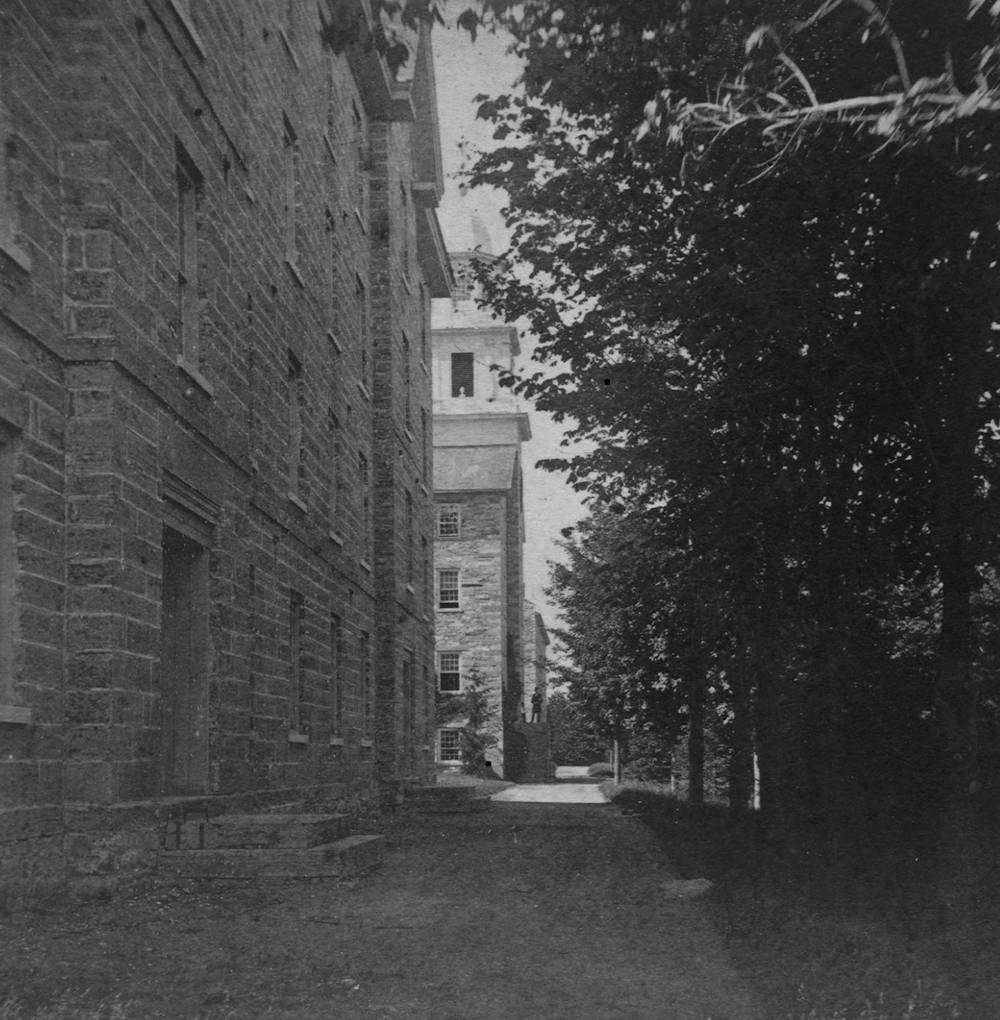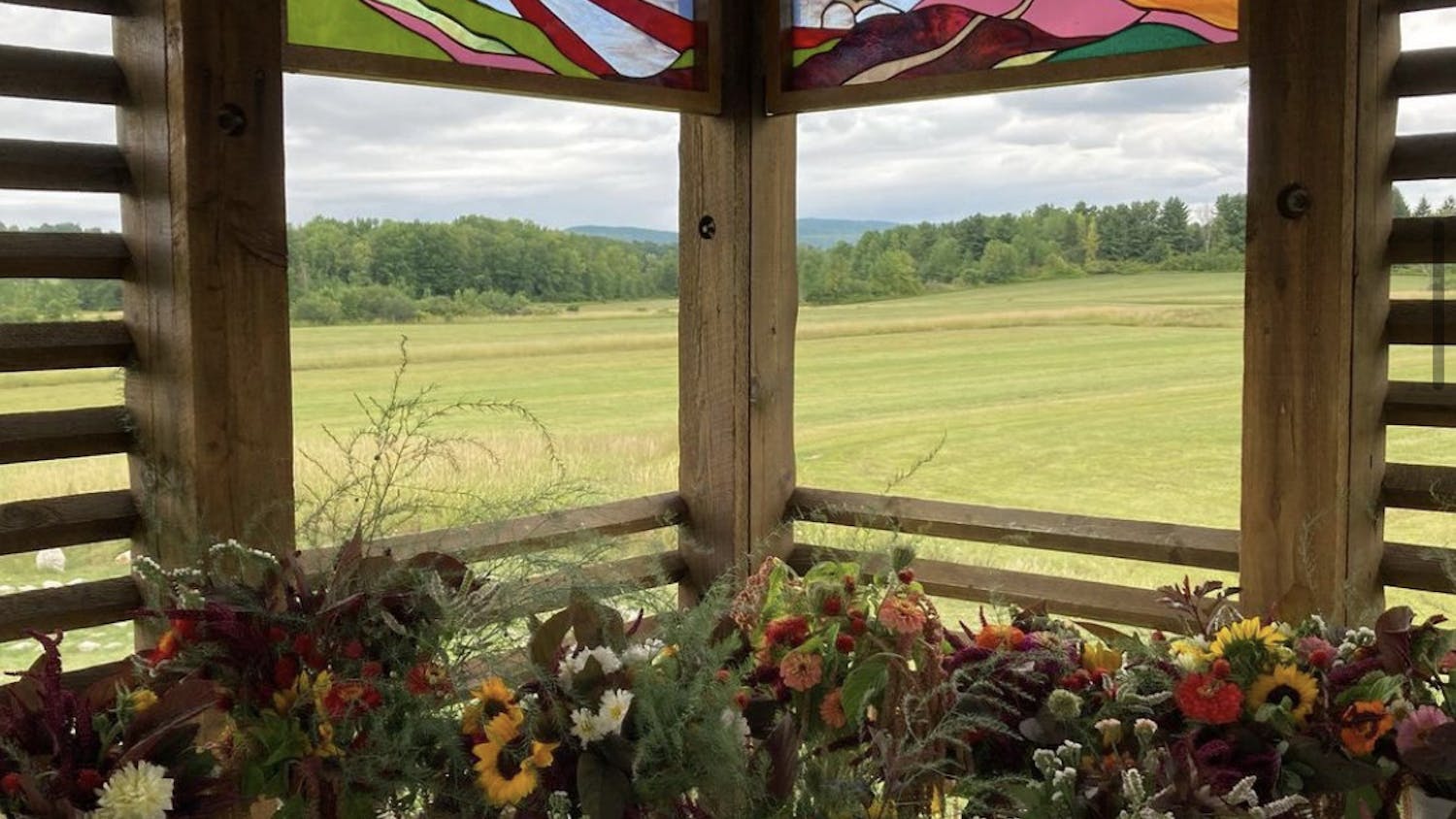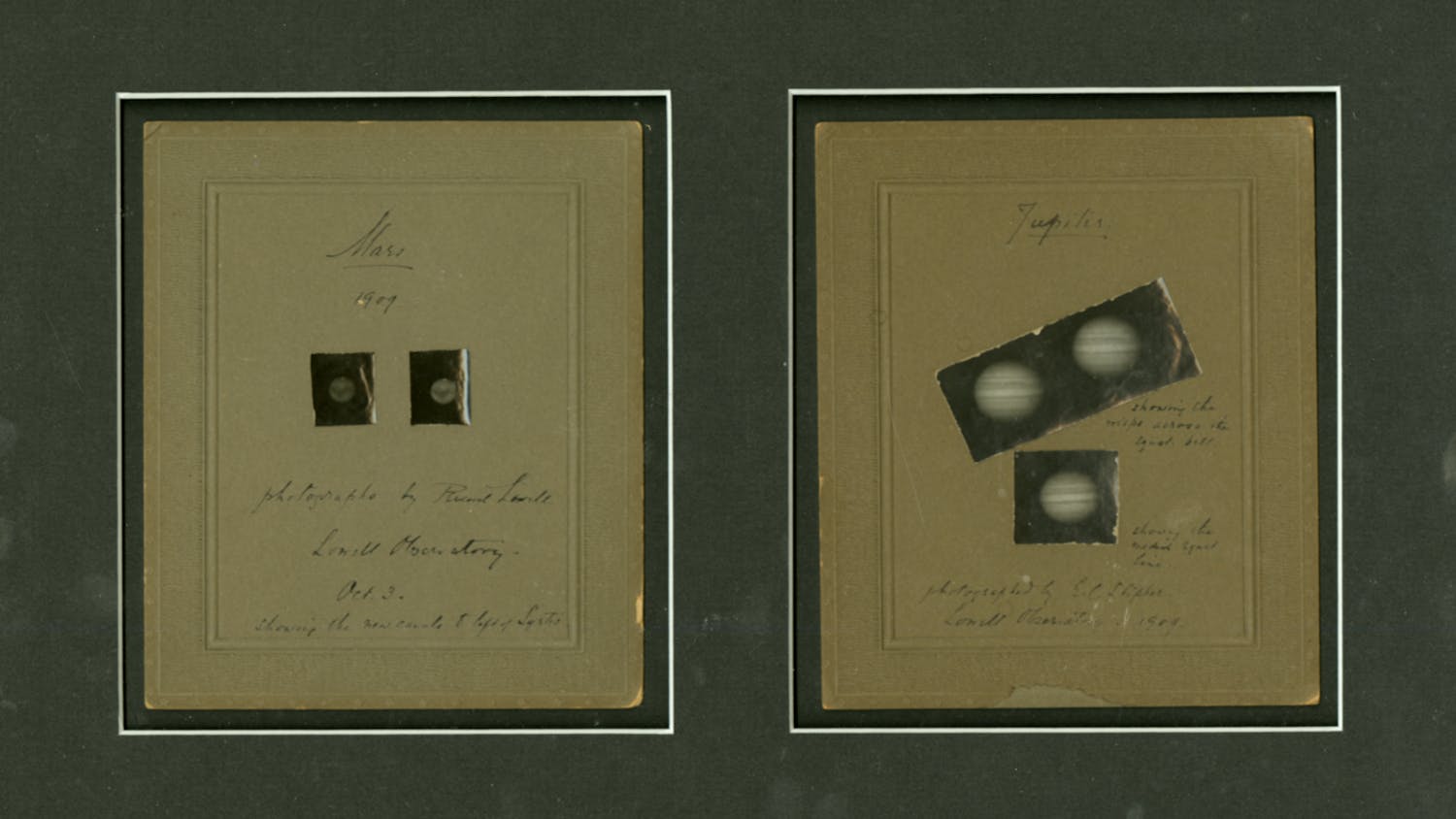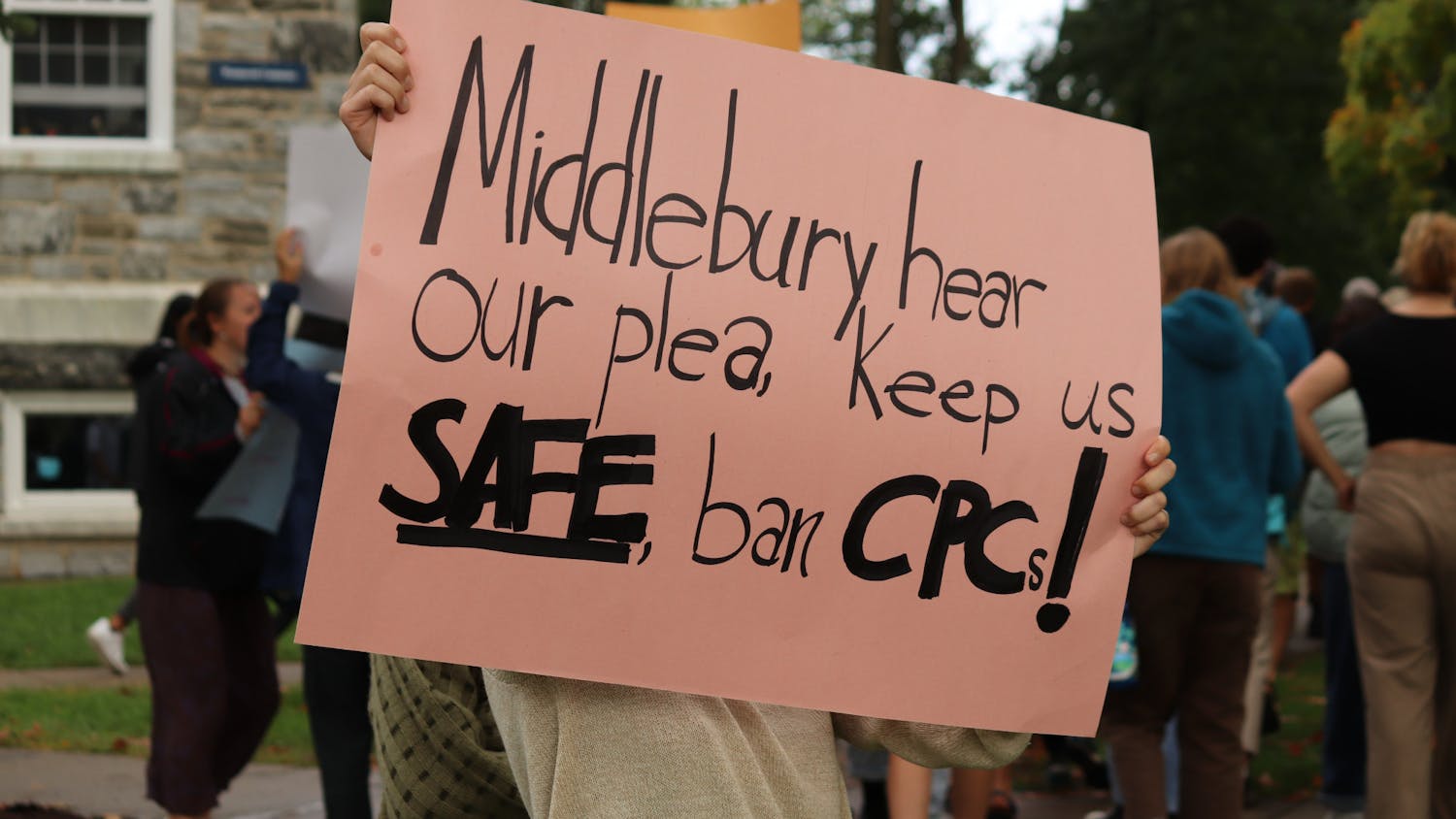“From the Archives” is an opportunity for various writers to visit the Middlebury Special Collections and write about a different artifact each week. The Special Collections boasts over 10,000 historic items, and through this column we encourage writers to explore not only the college’s history, but also the history of the world around us.
Surrounded by Vermont granite and a quaint village, it can feel as though Middlebury College exists outside the throes of time, preserved for all eternity in its autumnal glory. Yet despite this feeling that Middlebury serves as a historic snapshot of the past, students rarely stop to think about what life was like throughout the college’s history. Though students pass the three oldest buildings on campus nearly every day on walks to and from the Davis Family Library, it is easy to ignore their significance. However, for those seeking to dive deeper into Middlebury’s early history, Middlebury Special Collections displays photos taken by local photographer O.C. Barnes which paint a colorful (albeit black and white) picture of Middlebury in its nascent years. Although little information is known about these particular photos, they act as a lens into Middlebury College’s oldest history.
Painter Hall, named after the college’s founder Gamaliel Painter, was the college’s first official building. Upon its completion in 1816, the building fulfilled the duties of residential hall, dining hall, gym, library and classroom all at once. Although today it is often dismissed as a less-desirable residence hall, if you take a close look at Painter, you can find remnants of its storied history still present. Located on the eastern side of the building, a small plaque commemorates the founding of Middlebury’s first fraternity, Kappa Delta Rho, in 1905. By the 1920s, KDR moved from Painter to 48 South Street, but it was terminated by the college as a co-educational social house in 2015.
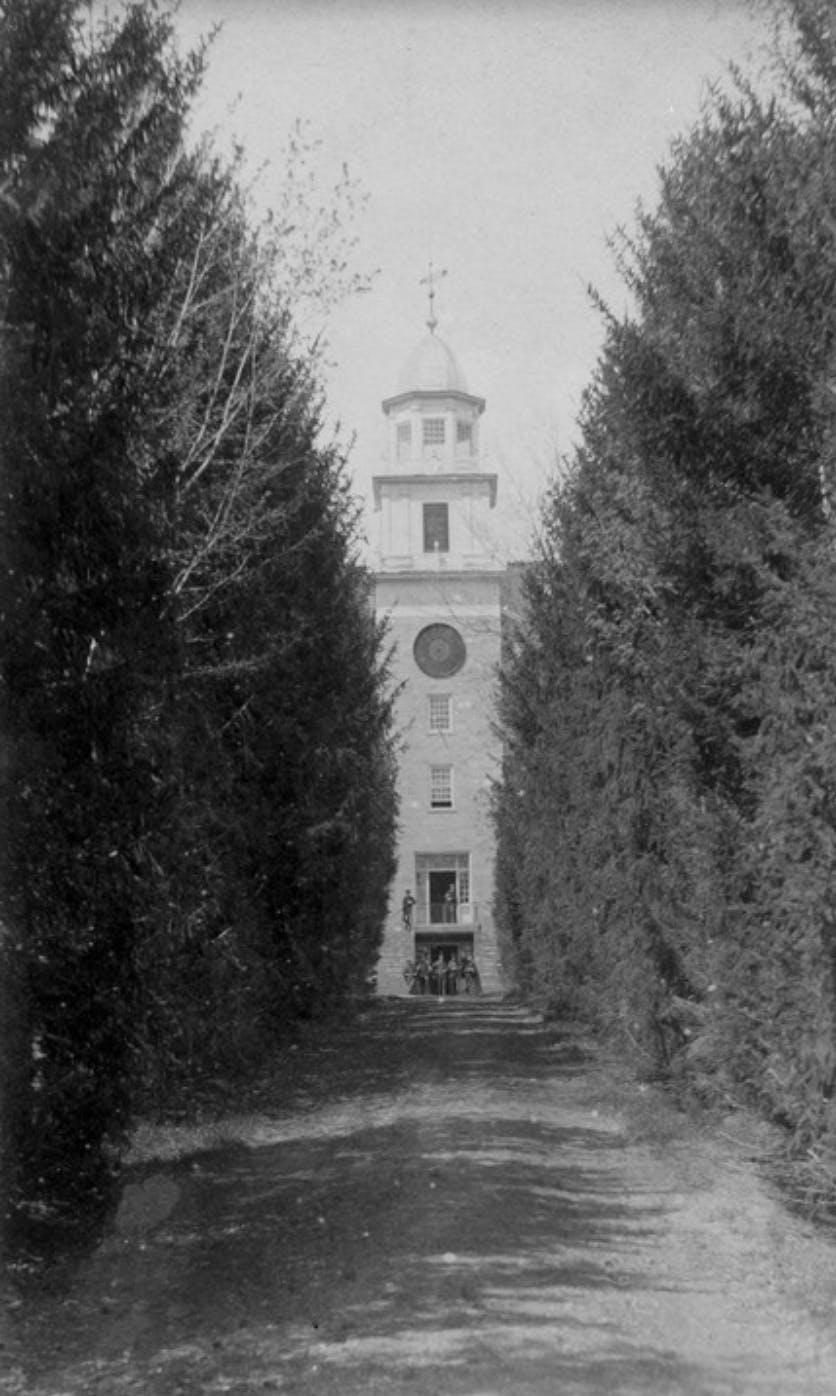
The second building of Old Stone Row is Old Chapel, which was completed in 1836. Old Chapel was commissioned in order to free up Painter Hall as strictly dormitory space since the college had grown to roughly 160 students by the 1830s. When it was first built, the bottom floor of Old Chapel housed a library and mineralogy museum; the second floor held classrooms; and the third floor, a two-story-high chapel. At the time of its construction, fir trees were planted to line Old Chapel’s entryway, rendering it almost unrecognizable to the modern onlooker, as seen in O.C. Barnes’ photograph. In 1883, the Chapel’s gallery became a reading room, and was the first location on campus that allowed for co-ed studying. Today, Old Chapel serves primarily as administrative offices, including President Laurie Patton’s office.
Thirty years after Old Chapel, Starr Hall was built, completing Old Stone Row in 1860. While plans for Starr had been in the works since the completion of Old Chapel, Middlebury suffered a loss of popularity and enrollment during the 1840s and 50s when students revolted against the administration’s harsh religious revival. A map from the Special Collections informs us that there were only six faculty members and 63 students attending Middlebury in 1850, nearly 100 students less than in the early 1830s. However, despite this temporary dip in popularity, Starr Hall was finally completed in 1860, creating more residence space for students. Unfortunately, only four years later, Starr Hall burned down on Christmas night and had to be rebuilt. Despite this rebuild, Starr was neglected for the better part of two decades. Because of the Civil War and more internal administration problems, the student body of Middlebury waned to a low of 38 students in 1880. Thankfully, President Ezra Brainerd took office in 1885 and revitalized the school. He worked to build Middlebury College’s popularity, broaden the liberal arts curriculum, expand the endowment and build new facilities. By the early 1900s, Starr finally resembled its current form.
Tulip Larson ‘25 (she/her) is an Arts & Culture Editor.
She also serves as an Arts & Culture writer, mainly writing for the "From the Archives" column that highlights an item from Middlebury's Special Collections each week. In her spare time, Tulip enjoys playing music in her on-campus band and exploring Vermont.
Tulip is an English major and and Art History minor.

